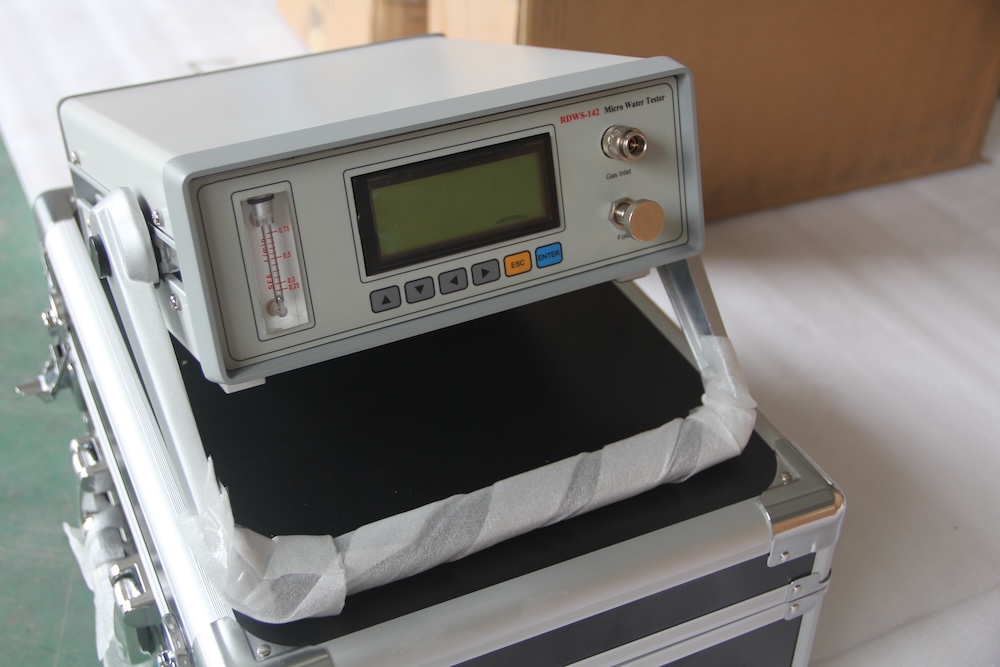Analysis of the working principle and operation steps of SF6 micro-water tester
SF6 gas is widely used in power systems such as high-voltage switchgear and transformers due to its excellent insulation and arc extinguishing properties. However, trace moisture in SF6 gas will have an adverse effect on its insulation properties. Therefore, it is very important to regularly detect the moisture content in SF6 gas. As a professional testing device, the correct understanding of the working principle and operation steps of the SF6 moisture tester is very important to ensure the accuracy of the measurement results.
1. Working Principle
The core component of the SF6 micro-water tester is the humidity sensor, and its working principle is based on humidity sensor technology. When trace moisture in SF6 gas enters the sensor sampling chamber, water vapor is adsorbed into the micropores of the sensor, causing the capacitive reactance of the sensor to change. This change is converted into a standard linear electrical signal by the built-in amplifier circuit of the sensor, processed by a microprocessor, and finally displayed on the LCD screen.
2. Operation steps
1. Connecting SF6 equipment
Before connecting, make sure all connecting parts are clean and dust-free to avoid contamination of SF6 gas.
Use an appropriate wrench (usually a box wrench or adjustable wrench) to tighten the joints, and be careful not to use excessive force to avoid damaging the threads.
During the connection process, you can gently pull the test gas pipe to ensure that there is no leakage in the connection.
Confirm that the direction of the inlet and outlet pipes is correct to avoid the wrong direction of gas flow.
2. Power on initialization
The power switch is usually located on the side or back of the instrument. When it is turned on, there should be an obvious "click" sound indicating that the power is on.
During the self-calibration process, the operator should avoid touching the instrument to avoid interfering with the calibration process.
If the "status indicator" light flashes for too long or is abnormal, the instrument should be turned off and the sensor should be checked to see if it is normal.
3. Function Selection
The "Function Selection" interface usually contains multiple options, such as "Data Test", "Historical Data Query", "System Settings", etc. Please read the instructions carefully before selecting the corresponding function.
Use the navigation key or touch screen to select the required function, and ensure that the selected function is consistent with the current operation purpose.
4. Check the battery level
The battery level is usually displayed in the upper right corner of the screen as a percentage.
If the battery level is low, stop the operation and charge immediately to avoid data loss due to low battery level during measurement.
5. Start measuring
When adjusting the flow valve, rotate it slowly and observe the changes in the flow meter until the flow rate stabilizes at 0.6L/min.
During the measurement process, pay attention to the real-time display curve of the instrument to ensure that the data collection is normal.
If the curve is abnormal, stop the measurement immediately and check whether there is a problem with the instrument or gas connection.
6. Store data
Enter or select the device number in the "Device Number" column to ensure data traceability.
After clicking "Save", the instrument will usually prompt that the data has been saved successfully, and you can proceed to the next step without worry
7. Print data
Before printing, make sure the printer is properly connected and online.
When printing, you can choose to print all data or only key data, depending on your actual needs.
8. Measuring other equipment
Before changing the measuring equipment, be sure to close the flow control valve to prevent SF6 gas leakage.
When removing and reconnecting the adapter, be careful to keep the connector clean to avoid introducing new pollution sources.
For continuous measurement of multiple devices, it is recommended to record the measurement time and results of each device for subsequent analysis and comparison.
The SF6 micro-water tester is easy to operate and has accurate measurements, which is of great significance for ensuring the normal operation of power equipment. Mastering its working principle and operating steps can effectively improve the detection efficiency and ensure the reliability of the measurement results. I hope this article can provide useful technical guidance for industry insiders.





